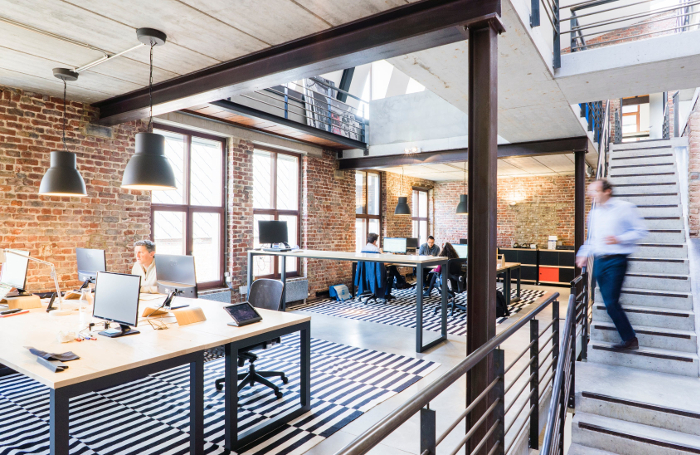On Monday 19 July 2021, the UK government relaxed the majority of legal restrictions in place to control the spread of coronavirus. Government advice does, however, continue to stress the following:
- limit the close contact you have with those you do not usually live with, and increase close contact gradually. This includes minimising the number, proximity and duration of social contacts
- meet outdoors where possible and let fresh air into homes or other enclosed spaces
The government “expects and recommends” any return to work to be “gradual” and that people wear face coverings in crowded areas such as public transport.
Social distancing guidance no longer legally applies and there are no longer legal limits on social contact. However, updated government guidance for offices, factories and labs continues to call on employers to review layouts in the workplace to mitigate transmission of the virus and to use screens or barriers and avoid face to face working arrangements. It also stresses the need for good ventilation.
The government’s advice is that businesses should discuss a return to the workplace with staff to make arrangements that meet both business and individual needs.
Reports from several practices suggest that many will continue with flexible and hybrid home/office working arrangements for staff over the coming months and possibly indefinitely.
Top 10 UK practice Hawkins\Brown has set up a two days a week rota for working in its London office. This allows some additional space for those wanting to come in more often and there is an online booking process to ensure the studio is not over-populated.
Generous spatial arrangements there have been kept in place, which means there is not room to accommodate everyone at any one time. All desks are unassigned, so people sit wherever they wish for the day, after which the office is cleaned daily top to bottom.
“We’re taking it step by step: giving everyone a choice, but gently and gradually encouraging people to return because we know there are benefits from being able to work together.” states partner Nigel Ostime.
At Atkins, COVID-19 arrangements are still in place.
“We are still maintaining all the COVID-secure systems we have had in place over the past 18 months,” states Director Valerie Evans. “Green marked seating to enable social distancing at desks, hand sanitiser at every bank of workstations, and the enhanced and continuous cleaning of surfaces regularly used, such as handrails, lift buttons and toilets.”
“We are only encouraging staff in, not making it mandatory, as many will still feel anxious about travelling on public transport and mixing in the office.”

Another major practice reports that when staff come in it is for two days, on a team based rota of Monday and Tuesday or Thursday and Friday. In its studio, it is retaining the arrangements it previously had: wearing masks if moving around, but not at desks. It is providing hand sanitiser and maintaining an intensive cleaning regime.
It reports that, like most businesses in every industry, several staff have been isolating at home due to being “pinged,” but that working remotely is hardly disruptive given our familiarity with it.
At PLP Architecture, all of its mitigation measures are remaining in place, such as temperature checks for everyone on entering and spatial arrangements for desks are being retained. It has provided staff with a comprehensive list of safety requests and guidance, and is trying to make it as easy as possible for its team to stay safe.
“The collaboration between teams has been missed,” says Head of HR Sonal Rathod.
Lifts between floors are restricted to two people, for instance, and seating plans keep staff spread out around the office. Mask wearing (optional once you are at your desk) and social distancing will be kept in place, with masks, gloves and soap are provided on desks throughout the studio.
Recommendations for construction sites
The Construction Leadership Council (CLC) has updated its Site Operating Procedures. These have been used, the CLC estimates, on 99% of sites in the UK during the pandemic.
While they are no longer in line with the government’s legal requirements (as of 19 July 2021), they will continue to be available to businesses across the supply chain as valuable ‘reference documents’. The CLC has stated that it is clear that COVID-19 will need to be managed on construction sites for some time.
The CLC has also updated its guidance on the use of face coverings in construction to bring it in line with the government’s new safety guidance on construction and other outdoor work.
The updated government guidance is that the use of face coverings and/or PPE is no longer required while carrying out construction activities. However, other government guidance states that it expects and recommends face coverings to be worn in crowded and enclosed spaces; and in places where people mix with others, they do not normally meet.
The CLC adheres to the latter position. It recommends that in all such situations employers should make face coverings available: that it is expected and recommended that they be worn.
Thanks to Nigel Ostime, Partner, Hawkins\Brown; Valerie Evans, Director, Atkins; Sonal Rathod, Head of Human Resources, PLP Architecture.
Text by Neal Morris. This is a Professional Feature edited by the RIBA Practice team. Send us your feedback and ideas.
RIBA Core Curriculum topic: Legal, regulatory and statutory compliance
As part of the flexible RIBA CPD programme, professional features count as microlearning. See further information on the updated RIBA CPD core curriculum and on fulfilling your CPD requirements as an RIBA Chartered Member.









